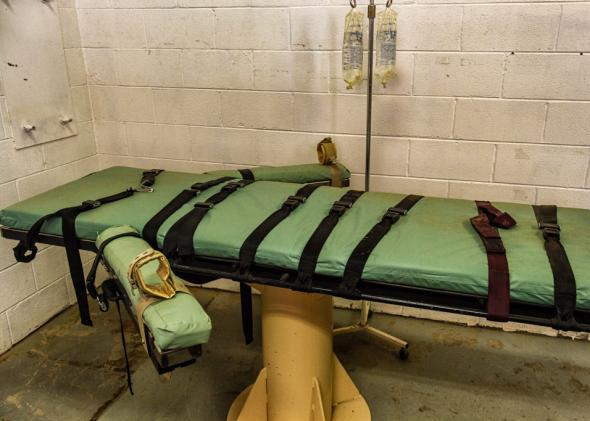On Monday the Supreme Court upheld the use of a drug called midazolam in lethal injections. Midazolam is administered to make the inmate unconscious before he receives the drugs that paralyze, then kill him. Several death row inmates in Oklahoma had challenged the use of the drug, claiming it constituted “cruel and unusual punishment” in violation of the Eighth Amendment.
By a 5–4 vote, the court held that midazolam does not violate inmates’ constitutional rights. The conservative justices joined an opinion by Justice Samuel Alito upholding the practice. Alito explained that the prisoners had failed to establish that the risk of harm posed by midazolam is greater than the risk posed by available alternative drugs. Moreover, Alito noted that the prisoners’ preferred drugs—which are allegedly more humane—are unavailable in Oklahoma. (Alito blames the unavailability of these drugs on “anti-death-penalty advocates” who “pressured pharmaceutical companies to refuse to supply the drugs used to carry out death sentences.”) Thus, the state can execute its inmates with the drugs it has at its disposal.
In dissent, Justice Sonia Sotomayor accused the majority of utter callousness, writing that, under the court’s reasoning:
It would not matter whether the State intended to use midazolam, or instead to have petitioners drawn and quartered, slowly tortured to death, or actually burned at the stake.
Both Sotomayor and Justice Stephen Breyer read their passionate dissents from the bench. Breyer’s opinion, joined by Justice Ruth Bader Ginsburg, suggests that the death penalty itself may violate the Constitution. Justice Antonin Scalia also read aloud his concurrence, responding to Breyer. It is exceedingly rare for two justices to read their dissents in the same case, and equally rare for a justice to read a concurrence from the bench.
